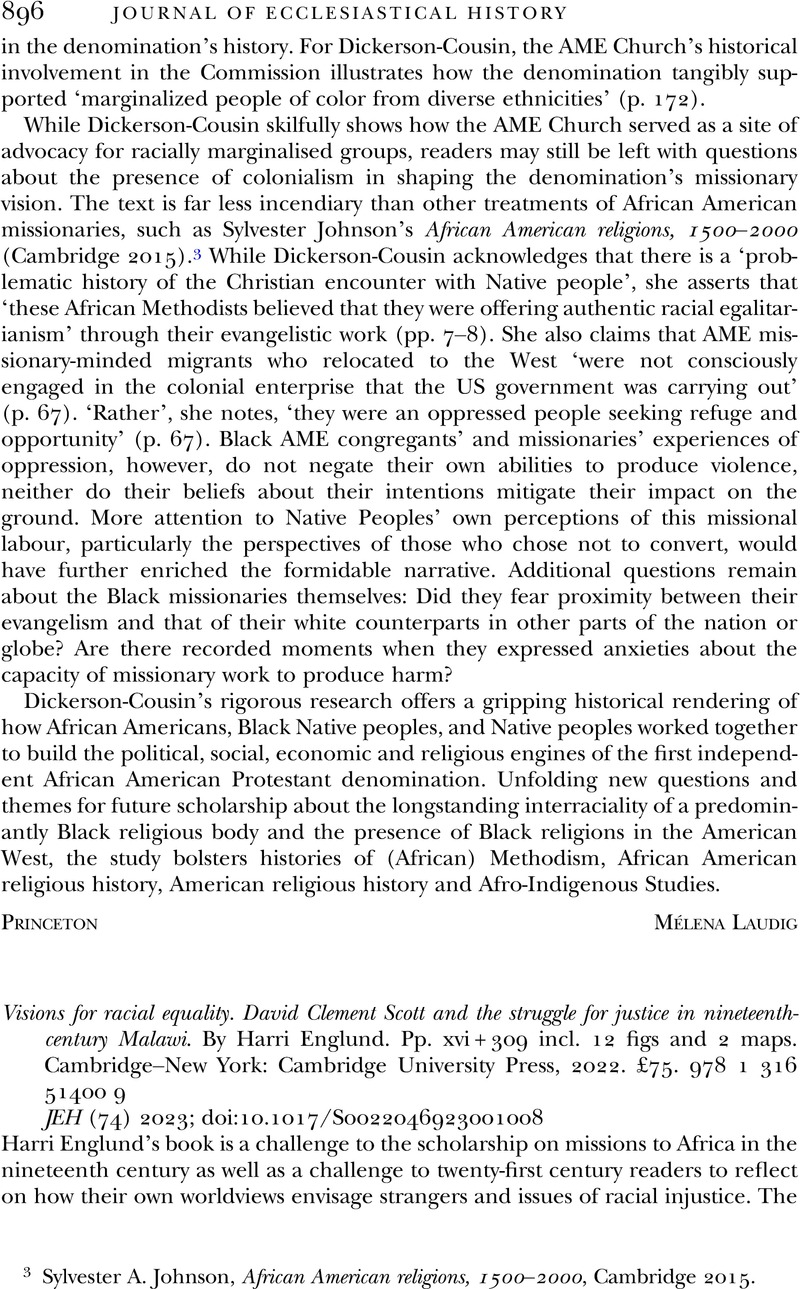No CrossRef data available.
Article contents
Visions for racial equality. David Clement Scott and the struggle for justice in nineteenth-century Malawi. By Harri Englund. Pp. xvi + 309 incl. 12 figs and 2 maps. Cambridge–New York: Cambridge University Press, 2022. £75. 978 1 316 51400 9
Review products
Visions for racial equality. David Clement Scott and the struggle for justice in nineteenth-century Malawi. By Harri Englund. Pp. xvi + 309 incl. 12 figs and 2 maps. Cambridge–New York: Cambridge University Press, 2022. £75. 978 1 316 51400 9
Published online by Cambridge University Press: 04 October 2023
Abstract
An abstract is not available for this content so a preview has been provided. Please use the Get access link above for information on how to access this content.

- Type
- Reviews
- Information
- Copyright
- Copyright © Cambridge University Press 2023



